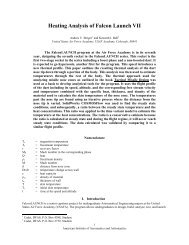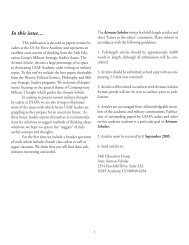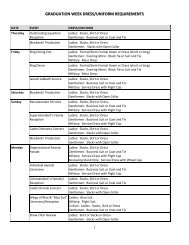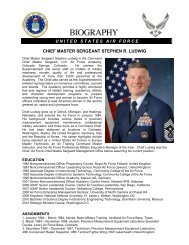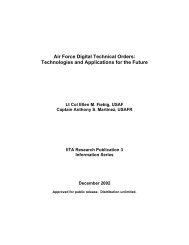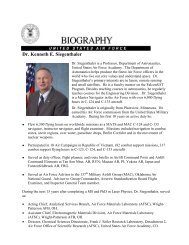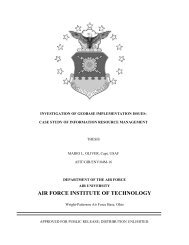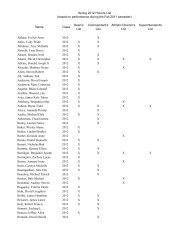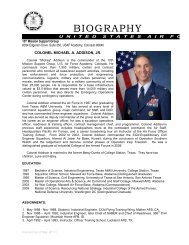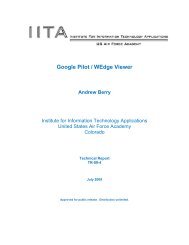the rollback of south africa's biological warfare program
the rollback of south africa's biological warfare program
the rollback of south africa's biological warfare program
Create successful ePaper yourself
Turn your PDF publications into a flip-book with our unique Google optimized e-Paper software.
<strong>program</strong>.<br />
This monograph analyzes <strong>the</strong> origins and development <strong>of</strong> <strong>the</strong> South<br />
African CBW <strong>program</strong>, as well as its <strong>rollback</strong>. It concludes with a pr<strong>of</strong>ile <strong>of</strong><br />
South Africa as a state that produced weapons <strong>of</strong> mass destruction and with a<br />
list <strong>of</strong> outstanding questions. More than twenty policy lessons, based on <strong>the</strong><br />
South African case, are presented, which should be considered in future CBW<br />
non-proliferation studies.<br />
THE ORIGINS OF THE BIOLOGICAL WARFARE PROGRAM<br />
In 1981 or earlier, <strong>the</strong> South African government initiated Project Coast, a<br />
sophisticated chemical and <strong>biological</strong> <strong>warfare</strong> (CBW) <strong>program</strong>. The focus here<br />
is on <strong>the</strong> <strong>biological</strong> aspect <strong>of</strong> <strong>the</strong> <strong>program</strong>, which was especially sophisticated,<br />
and how it developed.<br />
Project Coast was not <strong>the</strong> first CBW <strong>program</strong> that <strong>the</strong> South African<br />
government had developed. From 1914-1918 and 1939-1945, South African<br />
troops fought in <strong>the</strong> two World Wars and faced <strong>the</strong> threat <strong>of</strong> CBW. Although<br />
<strong>the</strong> 1925 Geneva Conventions banned <strong>the</strong> use <strong>of</strong> chemical and <strong>biological</strong><br />
weapons in <strong>warfare</strong>, Japan and <strong>the</strong> Soviet Union employed such weapons in<br />
WWII. As early as <strong>the</strong> 1930s, widespread evidence emerged <strong>of</strong> <strong>the</strong> efficacy <strong>of</strong><br />
<strong>biological</strong> <strong>warfare</strong> (BW) based on scientific work conducted in <strong>the</strong> U.S.,<br />
United Kingdom, and <strong>the</strong> Soviet Union. 1 The South African scientific and<br />
military communities kept pace with <strong>the</strong> various developments in CBW.<br />
In <strong>the</strong> 1940s, South Africa produced mustard gas for possible use in<br />
WWII. According to Dr. Renfrew Christie, 2 <strong>the</strong> mining industry had<br />
developed, since <strong>the</strong> 1930s, explosives that were linked with chemical agents.<br />
The Anglo-American Corporation, Anglo-Vaal, and o<strong>the</strong>r companies were<br />
involved. The Director-General <strong>of</strong> War, H.J. van der Bijl, oversaw <strong>the</strong><br />
production <strong>of</strong> chemical weapons and defensive measures that would protect<br />
South African troops against chemical and <strong>biological</strong> attack during <strong>the</strong> Second<br />
World War.<br />
2




